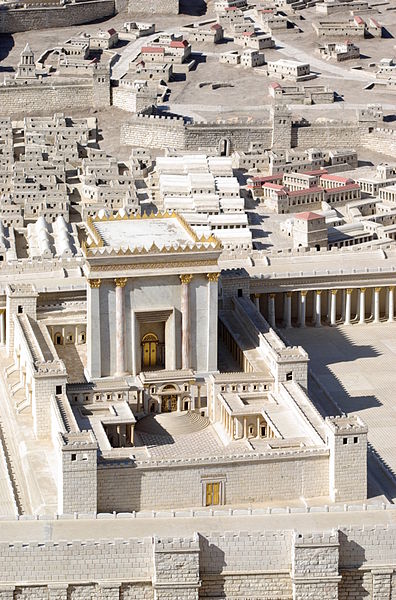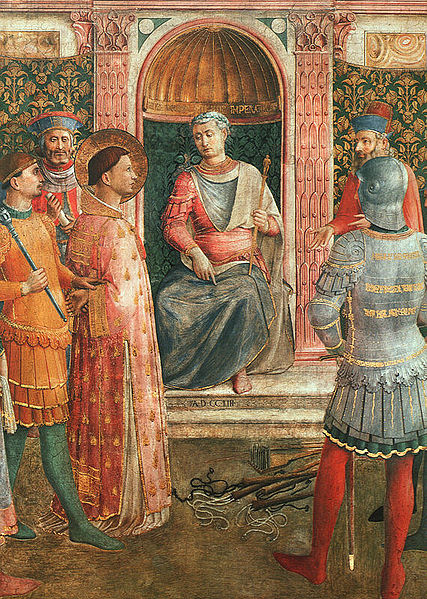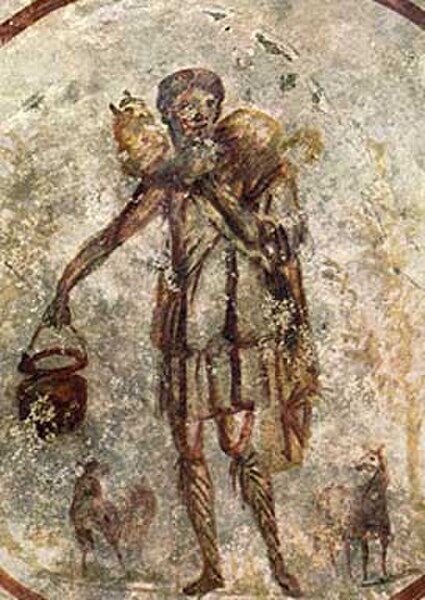Early Christianity, otherwise called the Early Church or Paleo-Christianity, describes the historical era of the Christian religion up to the First Council of Nicaea in 325. Christianity spread from the Levant, across the Roman Empire, and beyond. Originally, this progression was closely connected to already established Jewish centers in the Holy Land and the Jewish diaspora throughout the Eastern Mediterranean. The first followers of Christianity were Jews who had converted to the faith, i.e. Jewish Christians. Early Christianity contains the Apostolic Age and is followed by, and substantially overlaps with, the Patristic era.
Model of the Second Temple in the Israel Museum
Christ with the Two Thieves by Fra Angelico c. 1437 – c. 1446
St Paul's Pillar in Paphos
Saint Peter and Saint Paul (1570s) by Juan Fernádnez Navarrete
The history of Christianity follows the Christian religion as it developed from its earliest beliefs and practices in the first century, spread geographically in the Roman Empire and beyond, and became a global religion in the twenty-first century.
Funerary stele of Licinia Amias on marble, in the National Roman Museum. One of the earliest Christian inscriptions found, it comes from the early 3rd century Vatican necropolis area in Rome. It contains the text ΙΧΘΥϹ ΖΩΝΤΩΝ ("fish of the living"), a predecessor of the Ichthys symbol.
St. Lawrence (martyred 258) standing before Emperor Valerianus
The Oxford and Cambridge Acts of the Apostles – Paul the Apostle's missionary journeys
One of the oldest representation of Jesus as the Good Shepherd from the catacombs of Rome, made around 300 AD








